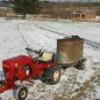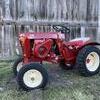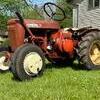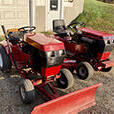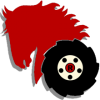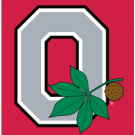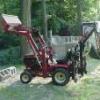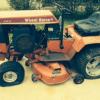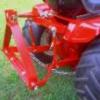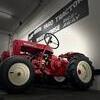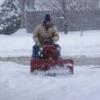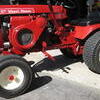Leaderboard
-
in all areas
- All areas
- Markers
- Marker Comments
- Marker Reviews
- Articles
- Article Comments
- Article Reviews
- Classfieds
- Classified Comments
- Classified Reviews
- Wiki's
- Wiki Comments
- Wiki Reviews
- Blog Entries
- Blog Comments
- Images
- Image Comments
- Image Reviews
- Albums
- Album Comments
- Album Reviews
- Files
- File Comments
- File Reviews
- Posts
-
Month
-
All time
November 28 2011 - November 9 2024
-
Year
November 8 2023 - November 9 2024
-
Month
October 8 2024 - November 9 2024
-
Week
November 1 2024 - November 9 2024
-
Today
November 8 2024 - November 9 2024
- Custom Date
-
All time
Popular Content
Showing content with the highest reputation since 10/08/2024 in all areas
-
22 pointsI did a 7 hour round trip today for this beautiful 500 hour 520. She runs awesome!
-
22 pointsAs with most days, today I was wearing one of my Wheel Horse shirts. My brother stopped by and he had one on, then a little while later my son in law stopped by and he too had one on! It wasn’t too long before we were laughing about it, so I had my bride take a picture.
-
21 pointsand never saw armored truck following a hearst. That said ... Figured as long as I have a atv that sits and never gets used might as well have one of these.
-
21 pointsMe n BBT and several friends spent a long weekend up in Andover Maine to celebrate Trina 🥳 🎉 🎊 turning 50! She and our friend climbed Puzzle Mountian in Grafton Notch State Park ME on Friday. All 5 of us hiked a loop around the incredibly beautiful Dunn's Falls trail Saturday.
-
20 pointsGot the herd out for the last time before most of them go to bed for the winter. Just a 520 and 48" deck is still in service to mulch leaves and the 520HC and blade is getting ready to plow snow. I did some work to a 416-8 for a fellow redsquare member so I put it in the lineup as well. Next year the Work Horse will be in the lineup as well I hope.
-
19 pointsSorry for the messy garage! But I have now owned my 1977 Wheelhorse C-100 for 20 years! I got it when I was 13 years old for £300. I still remember clearly how excited I was, I live in the UK but I have always loved old American cars and 1960s and 1970s stuff, so when I got this it was the coolest thing ever. I have a ton of memories of driving it around, with a trailer on the back and my friends would take turns driving each other down to our shed/club house in the woods. It has been repainted but I always keep it rubbed down with an oily rag because I live on Dartmoor and it is super humid and wet here, especially in winter. Cheers all
-
19 pointsA while back I refreshed this tub cart that was given to me with some paint and bed liner. I used it quite a bit for smaller tasks and it showed the usual bumps and bruises after a while. A couple months ago one of the tired split apart and there was no saving it. I found a pair of flat frees with wheels that would work fine so I ordered them. I don't understand why they put pneumatic on some things like 2-wheel dollies, wheelbarrows and in this case, small tub carts. They look great and I happened to have a couple caps in my stash that fit perfectly. A couple weeks ago I stumbled onto a quart of bedliner on a clearance shelf cheap so I grabbed it. Taking advantage of a very warm day yesterday I rolled some on the interior. I think it turned out great and hid the marks from the years of usage quite well. I figure this cart won't be seeing any work again because one that I got from @stevasaurus is far better suited. It's bigger, much heavier built and the tilt balance is perfect. Come spring it will get a refresh as well but continue to do what it was intended to do.
-
19 pointsHas anyone ever been too tired to make the coffee right? We have two coffee makers. Mine’s from Germany and it grinds, presses the beans and shoots the water through with 240V of amazingness. Perfect coffee. Delish. Mrs. P. prefers the k-cup type, with her own grounds in a little refillable bucket. Yesterday making her coffee, I put the water in, filled her cup, put it in the machine, turned it on and walked away. While I was in the living room, she asked me what I did. More like “What did you do!!?” “What do you mean? I don’t know.” I walk into the kitchen and see a counter full of coffee and her cup next to the coffee maker!
-
18 points
-
18 points@ebinmaine @wallfish I haven't been on here much in the last.....well for quite a while now. I picked up a new hobby/side gig. Metal sculpturing and junk art. It's been a fun road traveled. It's made alot of people happy including myself. It's mostly simple things but some bigger and intricate pieces mixed in. So far I have pieces from Maine to Florida and out to Colorado.Even have one here as a mascot for a local brewery. Here are a few I've made this year.
-
18 pointsDid some trading with my buddy Ken b. He ended up with a really clean/mint 417-8 that I got from him a while back and I got a really clean, low hour 523dxi. I have not had much more than a little while this afternoon to start to mess around with it but I did manage to swap out the stock rear meats with a set of trails I had from another xi I had. So far this thing is strong. I have a nice 60” deck she will spin next summer and maybe back up snow machine this winter. As always great doing some trading with Ken!
-
17 pointsLast month I posted about whether I should patina a replacement hood for the C-160 I was working on or repaint it (the one on it had been hacked to clear the muffler as some PO was too cheap to by a pipe elbow). I had repainted all the rest of the tractor. You guys shamed me into repainting. Even bought the harbor Freight Surface conditioning tool. (Worked great on the top and sides not so good on the grill)... So today went to put the pretty repainted hood on the C-160.... Anybody have a line on a hood stretcher??? So what was your biggest screw up??? I am going to have a beer now....
-
17 pointsMy neighbor held an open house to show his latest addition to his collection. A local company, Pullman Autos were built in York , Pa. in 1905-1917. This is one of the 27 of this model that still exist. That's a lot of brass to keep polished. Some of his other iron. The Felton Flyer built by a dear friend---- Mr. Bob Frutiger Bobs daily driver pick up parked by his aircraft. Couple more pics.
-
17 pointsYesterday I finally got around to putting on my rebuilt RJ transmission (thanks Keith Jones and Larry Eads). Put the rear wheels on this am. ( old Montgomery Wards ag tires with a different style tread) . Began to work on motor tins, cull together missing parts ( clutch rod, lift cable, transmission boot, read hitch, etc. amazed at the parts I have!) Here are some pictures of the first two days. Yes that hood had some purple paint on it! Sanding with three types of paper! Going to finish up with Rustoleum Matte Clear as the final cover coat.
-
17 pointsBig shout out to Tony Toro Jr. for inviting me into the Wheel Horse world. He sold me a 1989 312-8 with a 37" deck and the bagger system. I don't have the time right now to go as deeply into it as I'd like. But, it has been an amazing learning experience and has provided the opportunity to have a wrench in my hands once more. First thing I did was install a new solenoid as it was not working when I got it. Installed the new one while it was on the trailer and then realized I had never driven a tractor nor did I really know how to back it off the trailer. Trial by fire. I'm still alive and no broken limbs, so all is good. I've used it mostly to cut the lawn (37" deck) and haul firewood closer to the house. Removed the mower deck while moving the wood and noticed some rust and a hole in the front. So, I decided to take it all apart, cut out the hole and weld a piece of 1/8" steel in place. I took the whole thing down to bare metal, used Rust Restore and black Farm Equipment gloss black on the inside and IH Red on the outside which I applied with a brush. I also used Blaster Surface Shield on the inside of the deck. Supposed to protect it for 2 years, so we'll see. Sanded and touched up the edges of the fenders, under the seat, the floorboards, etc. with the Red. Added skateboard sticky stuff to the floorboards. New drive and mower deck belts. New brake shoe installed. Replaced the headlights with LEDs. Everything is greased and it runs like a charm. Here are some pics.
-
17 pointsLast Sunday Janene Peirce pasted away due to injuries that was caused by being hit by a car last December. Many members on here know her as the bushing lady that set up at the show every year. Her battle has been tough over last few years from loosing her husband Jim and her daughter Christine but now she can be with them once again.
-
17 pointsI'm not one to give my tractors a name but this one just seems appropriate to call Dino. Some of you will recall the post on my road trip to Elgin a few weeks ago and came home with this. After a period of pondering what I wanted to do as well as fighting a 314H problem child I decided to tear it down for a mechanical restoration. I've got high hopes on this one. Most likely replacing that 314. I'm doing something different with the paint (no, it will be Regal red) so we'll have to see how it works but that's a ways down the road. I'll either elaborate on that or hide my head in shame. All indicates are that this is a solid machine. I guess just for some quick gratification I decided to get the engine spiffed up. Really just a good cleaning, rebuild the carb and a bit of paint. And of course, Terry's decals. The frame is dirty but solid. No repairs needed. The transmission seals were shot. The hitch pin came out by hand and I had hopes that the hubs wouldn't fight me too much considering the leaks. No such luck. I pushed the limits of a 3-jaw pulled. Something I should have done decades ago is make a good puller. I'm finally doing just that. I have maybe a half hour to finish it when I get a chance. I think this will straighten out without much trouble. No metal is cracked. That's it for now. This is going to be an all winter project. The inferno wobble mounts will be replaced with solid and a complete rewire will be done. Now if I can just get the paint right.................
-
16 points
-
16 points
-
16 pointsWatched my two neighbors farming today. The corporate farmer had half the soy beans cut when an end bearing froze in the head. So, load the head and back to the shop for new bearings. Wait for the end to see my other neighbor. No bearing failures in his 5 HP pulling team.
-
16 points
-
16 points
-
15 pointsHey guys. New here and just bought my first ever tractor: a Wheel Horse 312-8. No idea on year or hours, as there is no hours meter, but she seems to run very well and I'm excited to learn how to maintain this! I have a ton of questions and I'm hoping I can get some help here, as google researching isn't turning up much for me, and obviously Wheel Horse is no longer in business. I bought the tractor today but didn't have a way to get it to me, so will have it later this week and can get some photos/details if needed. Anyone know how I can get a parts manual? I'd like to have one in case I run into issues later on, and also just to get the basics sorted out: Spark Plug, Air Filter, Tire size, Light Bulb size, belt(s) etc... I like to keep spare parts on hand and would like to get some now! Likewise, I'd like to have a service manual too if there exists one, or just a general owners manual. Need to know oil capacity, how to remove the deck (won't be mowing with this so removing the 42" deck), how to replace a tire, etc Speaking of manuals, I found a few online but they seem to be for the newer Toro Wheel Horse models. Not sure how much they align with the older models Anything I should know specifically about this model or Wheel Horses in general? I will be using it primarily for hauling carts of firewood to and from the house during the heating season, and maybe for moving dirt and mulch in the summer I know I need a new seat for the tractor and am overwhelmed and confused when googling online. Any idea how I can figure out what seat would fit this model? I'm thinking I could maybe sell the 42" deck if there is a market for it. Anyone know if they are worth selling? That's all I can come up with now. I'm sure I'll come up with more! Unfortunately I'm busy with work the next week or so but plan on taking off a day next week to give this thing some TLC: wash her down, clean up any rusty spots, oil change, clean the air filter, check the tires, etc. Thanks all for your advice and I'm excited to be here!
-
15 pointsWon this at auction. They said it ran and mowed (yeah like I believe auction houses) Went to pick it up. it would start but barely ran took several tries to keep her running enough to get on the trailer...not looking good but I was really interested more in the nice looking deck. Got her home played around still ran like cr*p. (I had to look up how to adjust B&S carb...all mine are Kohler Techy...) still didn't want to run, drained fuel tank replaced fuel filter she ran better not great but the longer she ran the better she got. and some more carb adjustment now runs well. have ordered carb kit. Hydro seems strong haven't got really hot yet to test. Deck look good and is quiet. Heck the battery is only 4 months old... Not sure what to do with her really didn't expect to win (with tax and fees 300) and have no real need...
-
15 points
-
15 pointsGot all the new decals on and they are awesome! Even though the tractor isn’t finished it really brings it together with them on there. Last things to do is reseal the onan that’s leaking like a pig and get the rims and tires on it.
-
15 points
-
15 points
-
15 pointsLast day on the Delaware Bay. Back to Pa tomorrow to concentrate on deer hunting. Hard to believe MRS. K took some of her first steps on this same sand over 75 years ago.
-
15 pointsWell oiled machine? Waiting for some touch up. Got a blower and plow with it. No 3 point.
-
15 pointsMoved along two E-141s and the SL&WHN RR to the St. Louis area to @wh500special Many thanks for transport services Logan!!!@LtHorses1114
-
15 pointsDropped a really tall “standing-dead” ash tree yesterday…GT-1600 hauled it all after cutting up to the front yard to be picked up.
-
14 pointsTwo more carbs headed to their owners tomorrow. This one's off a Kohler 8 HP. Also got into the fuel pump for it. Disassemble. Clean out. Reassembly with new diaphragm.
-
14 pointsBrain farting has now become part of my daily routine! It doesn't get any better from here on out Kev
-
14 points
-
14 points
-
14 points
-
14 pointsGot the fellas out for a breath of fresh air today. Been a couple weeks for some of them, and it’s always better to run them than not. The 523-H is in desperate need of a bath!
-
14 pointsI’m not sure if this qualifies for Side Shot Saturday or Front End Friday so I’m either late or really early! I had to move some tractors around to get out my Peco trailer vacuum for the upcoming leaf harvest, so I figured I’d snap a few pictures! I left them like this for a while so I could walk in the backyard every so often and just look at them😂 When my wife sees me doing this she just shakes her head, and can’t believe she’s been married to this weirdo for over thirty years!!
-
13 points
-
13 pointsJust happened to be building this #5053 3 speed and thought maybe something a little different.
-
13 pointsPullstart Stables 2024 April plow day . Sure wish my son would take pictures with the phone sideways .first two pictures I played with the lighting and contrast.
-
13 points
-
13 points
-
13 pointshello all, here we have a roached out 312-8. giving it to a friend. i changed the axle seals as they were leaking. installed a new shifter boot. the gear oil was rusty. drained that. filled the tranny with kerosene and drove around the neighborhood. drained the kerosene and filled with fresh gear oil. changed the engine oil. greased the machine, including the nearly dry pto bearing. air filter was ok. new fuel line and filter front to back. had to replace the left footboard as it was crumbling (very rusty) with a better one from my stash. installed a draw bar from my stash too. not pretty but with a deck i have he should be good to go for mowing next year. regards mike
-
13 pointsAlthough it might be early unfortunately I put tractors away for winter. Fuel drained, batteries removed, etc. Just got too much going on with work & my elderly parents needing more help. Once leaves really start to accumulate I'll take mower deck off 654 & install plow. I'll mow with Troy Bilt 33 walk behind- it mulches. Winter project is my dad's Bultaco motorcycle in pics. He bought it new in 1970 when he came home from Vietnam. Hasn't run in bout 35yrs however it was properly stored in his basement. Should be easy to get running & only will need a few small things cosmetically. My goal is to have it completed by spring time. I'd like my dad to be able to ride it one last time.
-
12 pointsI decided to try these out. These look much better that what you see else where, because of fitment. Others have to be retap the holes on the bladder. Also the T has to be filed to fit into the 1/2 turn notch. I think these are so far and looks much better that aftermarket junk.
-
12 points
-
12 points
-
12 points
This leaderboard is set to New York/GMT-05:00

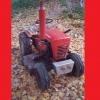

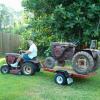
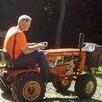
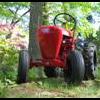
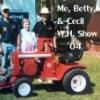
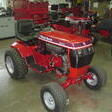
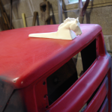

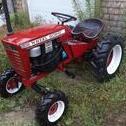
.JPG.9f2ecb26065c66527b0730084ab7fc7a.thumb.jpg.7dc8a04d9a53d44ee2b23f26ee94496f.jpg)
